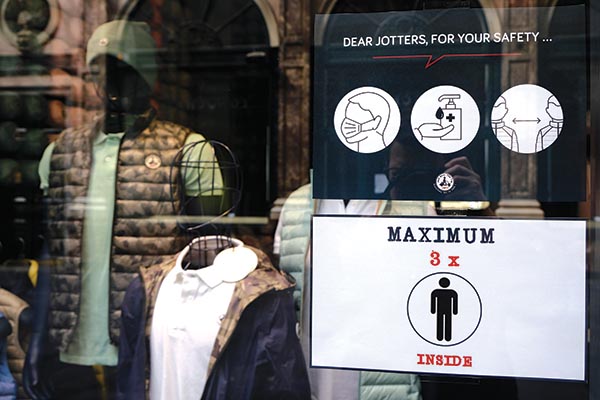
By Mike Cline
The pandemic has impacted nearly every aspect of our daily lives, and is reshaping entire industries. It’s shown which products and services are crucial to maintaining business, and in turn those industries have become essential to the recovery of small business communities worldwide.
Very early on, signs and graphics was one such vital industry, and its value has only grown as the pandemic has gone on.
Here are just three ways meaningful graphic displays have shown to be a crucial tool for businesses in both the fight against, and recovery from, the coronavirus.
Signs Make Public Health Accessible and Coherent
Above all, graphics have been essential in keeping people safe. When we were all quickly trying to learn the reach and scope of the situation, there was a need for information that could be digested quickly and visually.
Local officials, businesses and entire communities have been leaning on signs since the beginning as tools to communicate with residents and in turn keep people safe. As our understanding of the pandemic has evolved, most of us now expect to see signs outside businesses, medical centers, restaurants and community buildings as the first line of defense, arming us with the most up-to-date information on public health and the coronavirus.
Signs Help Normalize Changes to Business and Retail Culture
The first time you saw a person wearing a facemask and entering a storefront was likely a surprise. It might have even seemed unsettling or confusing. Now, it’s rapidly becoming a new normal, along with implementing new health and safety guidelines for customers and employees alike.
The signs and graphics industry has become key to establishing these new norms. When people enter buildings now, they automatically check doors and front entrances for signs indicating rules for entry. Clear, concise signage is a central tool for engaging with the public and communicating new ways of doing things. Graphics and displays on mask-wearing and social distancing also go a long way toward normalizing the public’s evolving relationship with health and safety.
Virtually every public-facing business has become reliant on professional signs and graphic displays to protect public health, keep business open and in turn keep the local economy running.
Signs Help Communities Rebuild
When restaurants closed dining rooms, owners were desperate to tell customers they were still open for delivery or pickup. When non-essential businesses closed, those entrepreneurs needed to tell customers how to take part in curb-side pickup. In the early days of panic and confusion, the signs industry was there to help businesses communicate with the public, and in many cases survive the immediate economic impact of the pandemic.

Now, the signs and graphics industry remains just as crucial as local business communities work to reopen, rebuild and recover. To reopen, many of them turned to graphics to explain new policies and procedures. As restrictions have lifted and been reinstated, businesses stayed in touch with the community in large part through the signage on their facility. As employees return to workplaces, clear graphics help keep staff members safe, whether they are working in an office building or a storefront.
The last six months have given us countless examples of individuals and businesses stepping in to help others, give back and show community. Signs and graphics have proven to be valuable tools and have met the call for visual communication during a pandemic. But most of all, it has been the incredible people who are part of this industry that have made signs stand out as an essential business.
When it mattered most, signs, graphics and display companies everywhere have made it their mission to help elevate public health, establish new norms and get entire communities back to business. We should all be proud of what we’ve accomplished, and confident in our ability to continue to support our communities in the weeks and months to come.
Mike Cline is Vice President of Franchise Development at Alliance Franchise Brands. He can be contacted by phone at 800-445-5172 or by email at [email protected].










Discussion
Join the discussion Sign In or Become a Member, doing so is simple and free